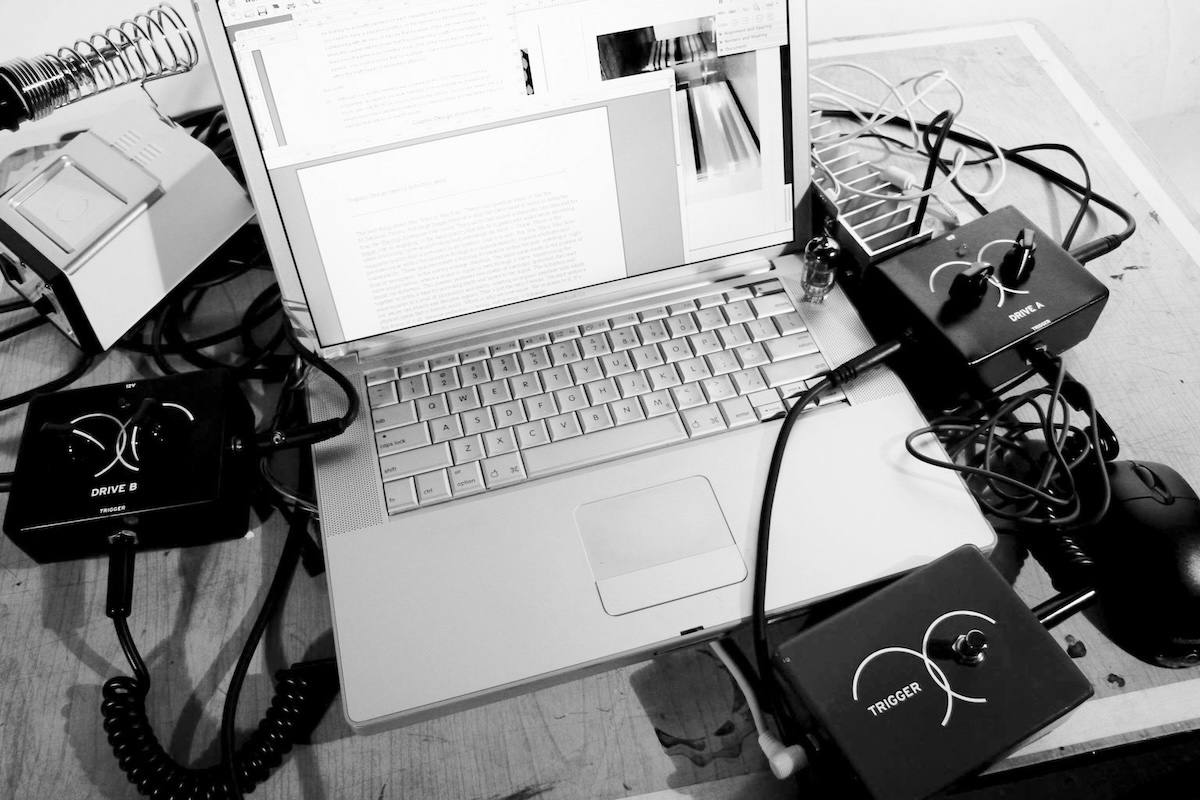Graphic Design Needs a Distortion Pedal – Aaron Beehre
The best thing about Star Wars is Han Solo. There’s no question about it, bar the Millennium Falcon, that large bogan beast of a ship that feels more at home in suburbia than the Starship Enterprise ever could. The quality that makes a character like Han and his bogan ride so engaging, is the same quality that has hi-fi geeks and audio nerds salivating when discussing valve amplification and recordings on vinyl—‘noise’. Noise is the enigmatic quality that is prevalent in all systems (like it or not). For Star Wars, Han Solo provides noise within the narrative through his unpredictability, roguish attributes and vulnerability. These qualities create a buzzing dissonance within the plot, injecting a ‘right kind of wrongness’ to the merely average storyline. The same noise exists in the process of valve amplification, where a sound or signal is feed through a valve, transforming the sound via distortion. This process produces two modes of harmonic distortion that react together to fatten a tone by providing additional layers and depth to the signal. The distortion—the noise—equates to a level of physicality and ‘reality’, an organic interface with which our senses can absorb and decipher signals in/through. That’s just the way it works. We exist within a physical space that is forever noisy. Which is why we love noise. We’re drawn to it. It’s the drama of it all, because perfection is boring, and entropy is dynamic.
So Han Solo and the Millennium Falcon work as noise elements, creating a dissonance necessary for engagement. That dissonance also creates layers, and a level of distance within the process, from which multiple interpretations can be made. It’s the fattening of a tone through valve amplification, and the physicality and vulnerability of a vinyl pressing. Given that the study of information theory has noise as intrinsic to any communication system, the elimination of noise seems futile. This is why the process of vinyl pressing and valve amplification is successful, as they credit the dynamic role entropy and noise play within their given system. The process utilises the push/pull nature of a noise to signal dialogue to create a higher level of engagement. Then there is Return of The Jedi and the fiasco that is Star Wars 1–3. George Lucas needs a Tube Screamer. The Tube Screamer is one of those great pedals that retains the original timbre of a signal and adds texture through a soft clipping process. Strictly speaking, the Tube Screamer is an overdrive pedal rather than a distortion pedal, but its ability to add sustain without destroying dynamics is a characteristic George should be made aware of.
A distortion pedal creates depth and texture giving sound power and lustre, removing it from the lame arse, skinny, middle class, white kid on the other end of the guitar. Such ‘depth’—harmonic layering, dissonance and texture—has its place in graphic design. It’s the necessary departure for reflection and critique, creating space for further discovery and revelation. This distance encourages experimentation and evolution, removing graphic design from the lame arse, skinny, middle class focus group at the other end of a brief. It’s like that project that you spent way too much time on, got way to involved with and it now runs your life to the point where you can no longer critique your work because you are your work. I’m not saying distortion, or noise, can save you from this plight as it seems we love the drama way too much to be saved. But through crediting and utilizing noise within the design process the designer is able to create a level of distance from the work, which operates as a critique towards the work as well allowing for new directions through the random/non-linear qualities that noise and entropy can produce.
The ability graphic design has to encompass a number of production techniques allows the designer to plunder the borders of disciplines. This process allows craft and production to become a form of entropy—noise—within the design process. The entropy creates a distortion of ideas that, in turn, project departure points within the parameters of the project. So designers gain much from immersion in production techniques, not only to satisfy their control fetish but also to create a non-linear approach to problem solving through engaging with a noise dialogue. This push/pull of design’s predetermined outcome or signal, and a recognition of the role noise can (and does) play in communicating that signal, creates a heightened level of engagement with the work for both audience and designer.

Photograph: Aaron Beehre, 2006